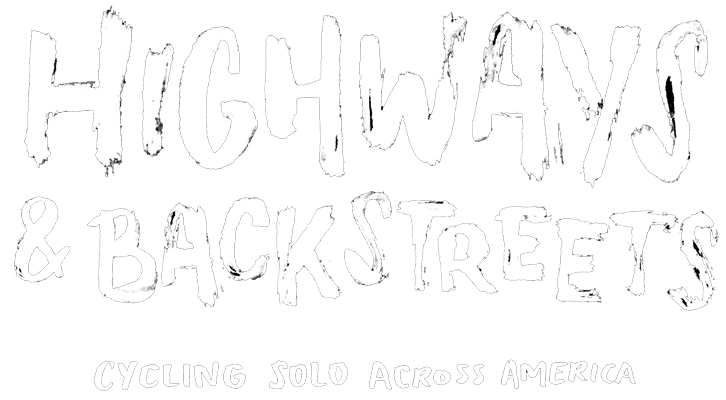Archive
All Posts
- The Final Stretch June 24, 2015
- Kentucky, the most underestimated state June 24, 2015
- Illinois, Indiana and the problem with repetition June 24, 2015
- From Rails To Trails June 24, 2015
- Colorado Express June 24, 2015
- Some Truths About Kansas June 24, 2015
- The Big Empty June 24, 2015
- The ups and downs of cycling through a National Park June 24, 2015
- Big Sky Country June 24, 2015
- From Blue To Red June 24, 2015
- Where The Streets Have No Name June 24, 2015
- Rollercoaster Ride June 24, 2015
- I lost my…breath in Oregon June 24, 2015
- The Turning Point June 24, 2015
- Border Crossing Number One June 24, 2015
- The First 200 Miles June 24, 2015
- Staying charged June 24, 2015
- Sticky Motivation June 24, 2015
- Be Yourself June 24, 2015
- The People Who Got Me Here June 24, 2015
- Packing up June 24, 2015
- Tough people June 24, 2015
- Deux North: Hunt 4 June 24, 2015
- Route Planning June 24, 2015
- The Comfort Zone June 24, 2015
- What is this about? June 24, 2015
Archives by Categories
Archives by Tags
Contributors
Archives by Year
Archives by Month
Archives by Day
- October 16, 2015
- October 3, 2015
- September 26, 2015
- September 24, 2015
- September 19, 2015
- September 8, 2015
- August 27, 2015
- August 21, 2015
- August 10, 2015
- August 2, 2015
- July 26, 2015
- July 21, 2015
- July 15, 2015
- July 11, 2015
- July 10, 2015
- July 9, 2015
- July 3, 2015
- June 25, 2015
- June 24, 2015
- June 23, 2015
- June 16, 2015

















